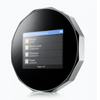
Cryptocurrency has transcended its role as a mere technological trend, evolving into a legitimate investment avenue. Given the digital nature of cryptocurrencies, they entail distinct security limitations. This is where the significance of hardware wallets comes to the forefront. This article undertakes a comprehensive exploration of the inner mechanics of hardware wallets and the rationale behind their pivotal role.
Understanding the Realm of Crypto Hardware Wallets
Defining a Crypto Hardware Wallet
Crypto hardware wallets are physical devices engineered to securely house and oversee digital assets. They safeguard private keys, which are pivotal for accessing cryptocurrency holdings, including renowned ones like Bitcoin and Ethereum.
Crafted with tamper-proof design, hardware wallets stand impervious to hacking or malware-induced compromise. Moreover, their user-friendly interfaces cater to both novices and experienced users, Supporting seamless management of digital assets.
The Merits of Embracing a Hardware Wallet
 One of the prime catalysts for the extraordinary value of cryptocurrencies is their robust security framework. Unlike traditional currencies, reliance on centralized authorities for asset protection becomes obsolete. However, the safety of digital assets hinges upon the secure custody of private keys.
One of the prime catalysts for the extraordinary value of cryptocurrencies is their robust security framework. Unlike traditional currencies, reliance on centralized authorities for asset protection becomes obsolete. However, the safety of digital assets hinges upon the secure custody of private keys.
Hardware wallets extend an additional layer of security by keeping private keys offline. Even if your computing device falls prey to compromise, your digital assets remain impervious to harm. Furthermore, the portable nature aspect ensures you can carry your hardware wallet wherever you venture and it gives you peace of mind.
Another advantage of hardware wallets lies in their capacity to manage multiple cryptocurrencies effortlessly. These wallets typically support an array of crypto assets, enabling centralized storage of diverse cryptocurrencies.
Assortment of Crypto Hardware Wallets
Hardware wallets fall into two categories: independent devices and USB-connected gadgets. USB-connected wallets connect to computers using USB cables, as the name implies. These frequently small and portable devices are popular with people looking for mobile digital asset management.
Standalone wallets, in contrast, connect wirelessly or via Bluetooth, eliminating the requirement for computer interaction. Although more expensive and physically larger, standalone wallets offer higher levels of protection and more sophisticated features.
 Prominent hardware wallet options include Ledger Nano S, Trezor Model T, and KeepKey, each endowed with unique attributes. It is prudent to conduct research to identify a wallet aligning with your specific requirements.
Prominent hardware wallet options include Ledger Nano S, Trezor Model T, and KeepKey, each endowed with unique attributes. It is prudent to conduct research to identify a wallet aligning with your specific requirements.
Demystifying the Technological Underpinning of Hardware Wallets
The Role of Private Keys and Public Addresses
Private keys, which provide access to digital assets, are fundamental to crypto wallets. Access to cryptocurrencies remains elusive without a private key. Private keys appear as character strings created at random and are stored offline to prevent hacking attempts.
Public addresses, on the other hand, can be shared for cryptocurrency transactions. These addresses appear on the blockchain after being securely generated with the corresponding private keys.
Given their crucial function as access mechanisms, protecting private keys is of the utmost importance. Hardware wallets excel at storing private keys offline, strengthening security against malicious attempts.
Shielding via Secure Element (SE) Chips
Hardware wallets use Secure Element (SE) chips to keep secret keys safe from people who shouldn't have access to them. The secret information on these chips can't be changed, so private key access can't be stolen. A unique identification number built into the chip makes it easier to prove that a key is the real deal.
SE chips are used in many different things, like credit cards and IDs, which shows how hard they are to hack.
Ensuring Encrypted Communication
Communication encryption is a cornerstone of hardware wallet design. Encryption shields private keys during transmission from device to computer or mobile app. This cryptographic layer ensures interception of communication does not equate to decipherment of content.
Encryption is non-negotiable in preserving digital asset sanctity, averting theft and hacking endeavors.
Embracing Your Crypto Arsenal: Mastery of Crypto Hardware Wallets
Beginning the Hardware Wallet Journey
Beginning a crypto hardware wallet setup is pivotal for digital asset security. These wallets, preserving private keys offline, raise the bar against hacking attempts.
The sequential process entails unboxing and initial setup:
Unboxing: The hardware wallet package includes essentials like a USB cable, instructions, and a recovery seed card. Safeguarding the recovery seed card is paramount, as it is your lifeline in case of wallet loss.
Connectivity and Setup: Connecting the wallet to your computer and following manufacturer instructions is imperative. Software installation might be necessary, depending on the wallet model.
Subsequently, expect a guided setup involving PIN and backup phrase creation.
Embracing the Recovery Seed Phrase
 The recovery seed phrase assumes pivotal significance in hardware wallet creation. It bestows the ability to regain access to digital assets upon wallet loss or damage. Safeguarding the recovery seed phrase is non-negotiable, as its exposure could compromise your funds.
The recovery seed phrase assumes pivotal significance in hardware wallet creation. It bestows the ability to regain access to digital assets upon wallet loss or damage. Safeguarding the recovery seed phrase is non-negotiable, as its exposure could compromise your funds.
Ensuring inscription of the recovery phrase on the provided card and maintaining it securely is of utmost importance. Multiple copies, stashed across secure locations, bolster contingency planning.
Fortifying Security Features Configuration
Hardware wallets extend an array of security settings. These include:
Two-Factor Authentication: A dual-step identification process elevating access security.
Passphrases: An additional layer of safeguarding your recovery seed phrase.
PIN: A crucial layer thwarting unauthorized access.
Activation of two-factor authentication bolsters wallet security. Incorporating a passphrase augments recovery seed protection. Regular PIN alteration enhances fund security.
By traversing these stages, hardware wallet configuration ensures enduring digital asset safety.
Harnessing Your Hardware Wallet Power
Managing Cryptocurrency Transactions
With your hardware wallet operational, cryptocurrency transactions commence seamlessly. You provide the recipient address and transaction amount. Subsequently, the wallet forges a transaction, signed by your private key and broadcast onto the blockchain.
Streamlining Multicurrency Management
Most hardware wallets support a wide range of cryptocurrencies. Your Bitcoin, Ethereum, and other digital investments all work well together in one place. Adding new coins is just as easy, which makes wallets more useful. Protect your crypto assets by using hardware wallet.
Evolving with Firmware and Software Updates
Hardware wallets require regular software upgrades for bug fixes and improved operation, much like any other piece of technology. Wallets are vulnerable due to outdated firmware. Despite auto-update features, frequent manual updates checks are prudent.
Conclusion
As our discourse has demonstrated, crypto hardware wallets are fundamental to securing cryptocurrency investments. They furnish an extra layer of security, placing financial autonomy firmly within your grasp. Whether an experienced crypto investor or a novice, embracing crypto hardware wallets is essential in orchestrating the guardianship of digital assets. Protect Your Cryptocurrency Wealth: Embark on a Comprehensive Journey through Crypto Hardware Wallets.





















































